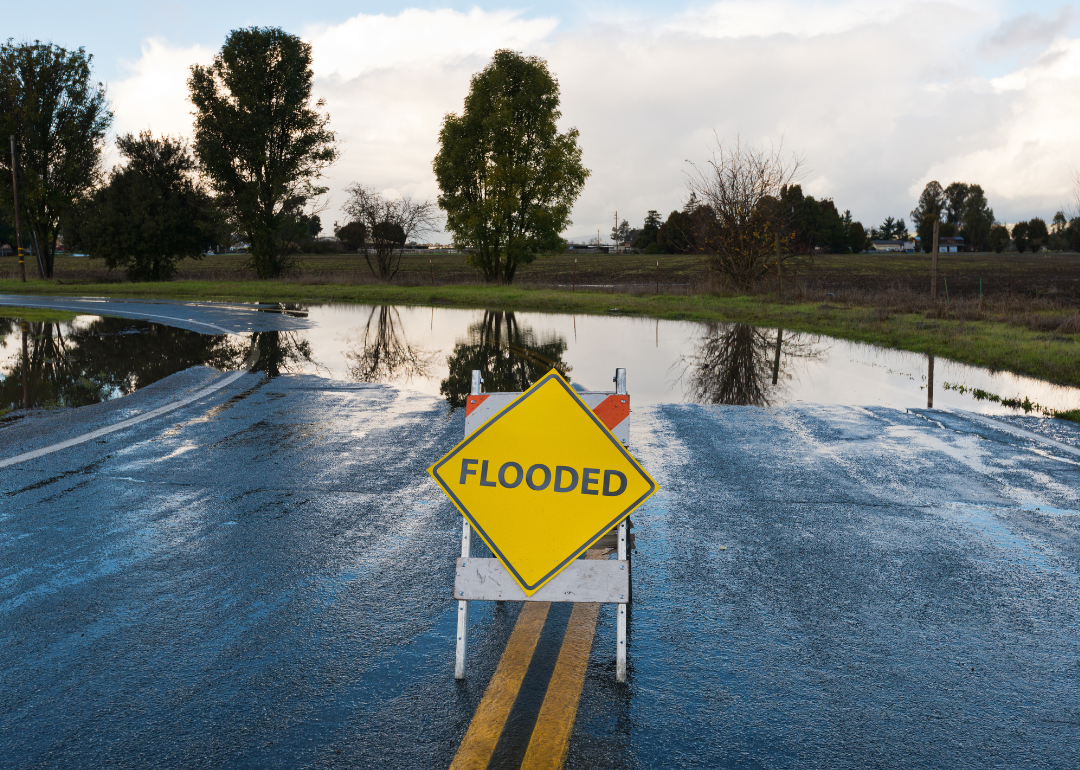
New Jersey is the #6 state with the most historic sites at risk of flooding
New Jersey is the #6 state with the most historic sites at risk of flooding
Rising sea levels. Runoff from rapidly melting snow and ice. Rivers and streams overflowing their banks. As climate change continues to wreak havoc on the environmental norms humans widely take for granted, the frequency and severity of extreme weather has increased on a global scale. Floods, the most common and fatal natural disasters in the U.S., continue to get more destructive. Catastrophic flooding events once thought to occur every 100 years could become annual happenings. And the nation's floodplains are projected to grow by roughly 45% by the end of the century.
Because of the deterioration and fragility of historical buildings, as well as long-term degradation of the natural environment around these structures, historic sites are often at serious risk of flooding. Stacker identified historic buildings of national significance across the U.S. located in census tracts with very or relatively high risk of flooding, using data from Federal Emergency Management Agency's National Risk Index and the National Register of Historic Places. The National Park Service outlines six criteria for what makes a historic building on the registry nationally significant, a less rigorous designation than being considered a National Historic Landmark. FEMA calculated the risk of flooding for each census tract by combining geospatial and historic flood-event data from the National Flood Insurance Program and National Oceanic and Atmospheric Administration. For each state, a maximum of three historic sites are listed in order of their flood risk, though many states have more at-risk sites in total. Colorado, Connecticut, and Idaho did not have nationally significant sites on the registry located in high-risk flood regions; as such they are absent from the national list.
Keep reading to see which historic sites are at risk of flooding in your state, or explore the national list with an interactive map here. Stacker is also publishing the raw data it merged to produce this story, available on GitHub and data.world.
New Jersey by the numbers
- Historically significant buildings with risk of coastal flooding: 5
--- Lucy, the Margate Elephant, Margate City (very high risk)
--- Twin Lights, Highlands (relatively high risk)
--- Fort Hancock, U.S. Life Saving Station, Highlands (relatively high risk)
- Historically significant buildings with risk of river flooding: 14
--- Trenton Jewish Community Center Bath House and Day Camp, Ewing (very high risk)
--- William Trent House, Trenton (very high risk)
--- Wallace House, Somerville (very high risk)
As the oldest roadside tourist attraction in the U.S., Lucy the Margate Elephant stands six stories tall, roughly five miles from Atlantic City. Built in 1882, Lucy has survived being struck by lightning, Hurricane Sandy, and plans to condemn her to demolition. Sea levels along the mid-Atlantic coast have been rising faster than in other areas, subjecting coastal areas like Atlantic City to increasingly severe flooding.
Now that you know how many sites are at risk in your state, continue reading to see which states have the most historic sites at risk of flooding.
States with the most historic sites at risk of flooding
1. Florida: 32 historically significant buildings with risk of flooding
2. New York: 28 historically significant buildings with risk of flooding
3. Arizona: 24 historically significant buildings with risk of flooding
4. Pennsylvania: 22 historically significant buildings with risk of flooding
5. Texas: 21 historically significant buildings with risk of flooding



